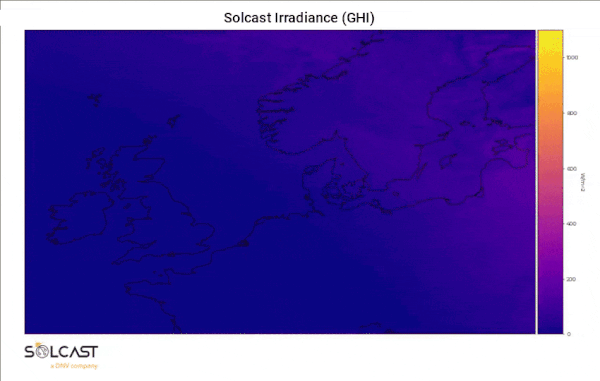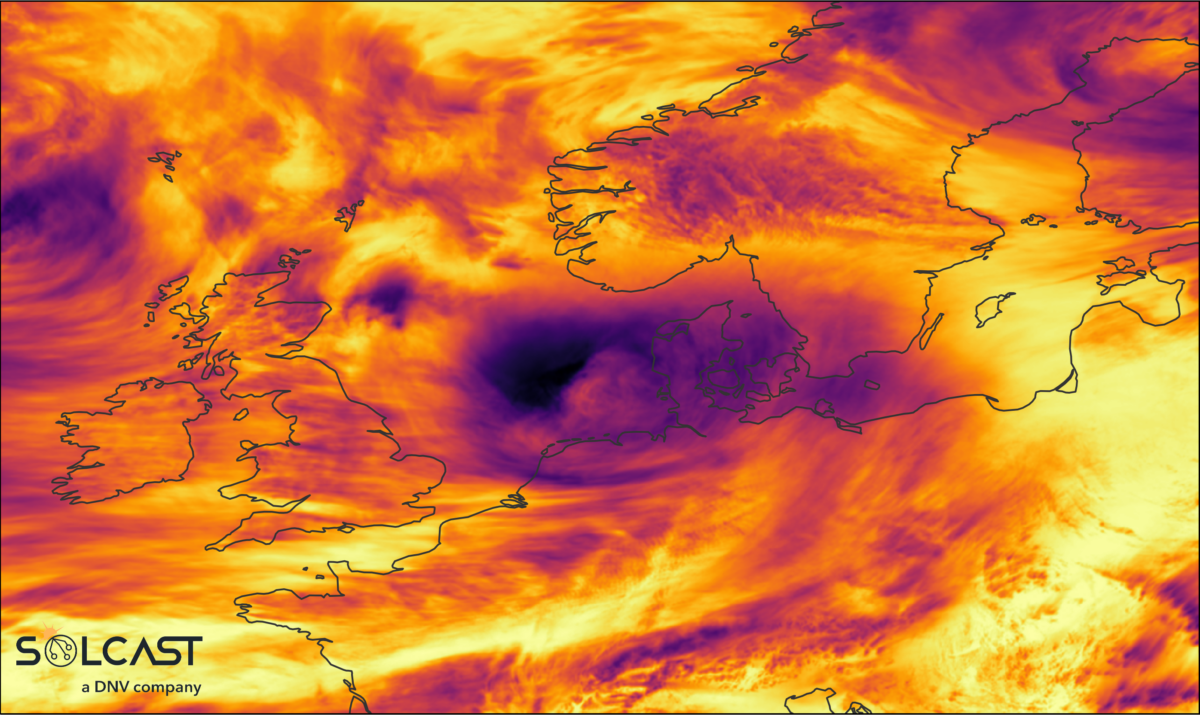An intense summer storm spinning across the Netherlands and Northern Europe has impacted irradiance and power generation, according to data collected by Solcast, a DNV company, via the Solcast API.
This event, unprecedented for the Netherlands, was named “Poly” by the German Weather Service. It hit the Dutch coast the morning of Wednesday 5 July causing road, train and air travel disruptions, large amounts of damage and unfortunately the loss of two lives.
The Dutch Meteorological Institute, KNMI, and German officials both issued red warnings for areas of their countries.

The unseasonal storm was created by a strong low pressure system moving across from England into the North Sea. The adjacent broad high pressure system sitting over Russia resulted in the large pressure gradients that brought strong wind to northern Europe.
This was further exacerbated by “sting jets”, small areas of rapidly cooling air, which saw the Netherlands’ highest-ever recorded summer gust (just over 146 km/h at IJmuiden). Storms such as this one are typically a feature of winter months and are rarely seen outside of October to March.
Poly’s impact on daily irradiance as it tracks across the Netherlands, northern Germany and into Scandinavia can be clearly seen in Solcast maps.

Poly’s low pressure created large areas of cloud that reduced the solar power production for the Netherlands and Denmark but strong winds it brought also saw increases in on and offshore wind generation.
Data from energy.info shows that Solar production on July 5 was significantly impacted, dropping to 944 MWh, one of the worst days for Dutch solar production this month and less than half the production of a clear day. Increased wind more than made up for this gap, with the extensive wind assets contributing over 60 GWh to the grid.

Solcast produces these figures by tracking clouds and aerosols at 1-2km resolution globally, using satellite data and proprietary AI/ML algorithms. This data is used to drive irradiance models, enabling Solcast to calculate irradiance at high resolution, with typical bias of less than 2%, and also cloud-tracking forecasts. This data is used by more than 300 companies managing over 150GW of solar assets globally.
The views and opinions expressed in this article are the author’s own, and do not necessarily reflect those held by pv magazine.
This content is protected by copyright and may not be reused. If you want to cooperate with us and would like to reuse some of our content, please contact: editors@pv-magazine.com.



By submitting this form you agree to pv magazine using your data for the purposes of publishing your comment.
Your personal data will only be disclosed or otherwise transmitted to third parties for the purposes of spam filtering or if this is necessary for technical maintenance of the website. Any other transfer to third parties will not take place unless this is justified on the basis of applicable data protection regulations or if pv magazine is legally obliged to do so.
You may revoke this consent at any time with effect for the future, in which case your personal data will be deleted immediately. Otherwise, your data will be deleted if pv magazine has processed your request or the purpose of data storage is fulfilled.
Further information on data privacy can be found in our Data Protection Policy.